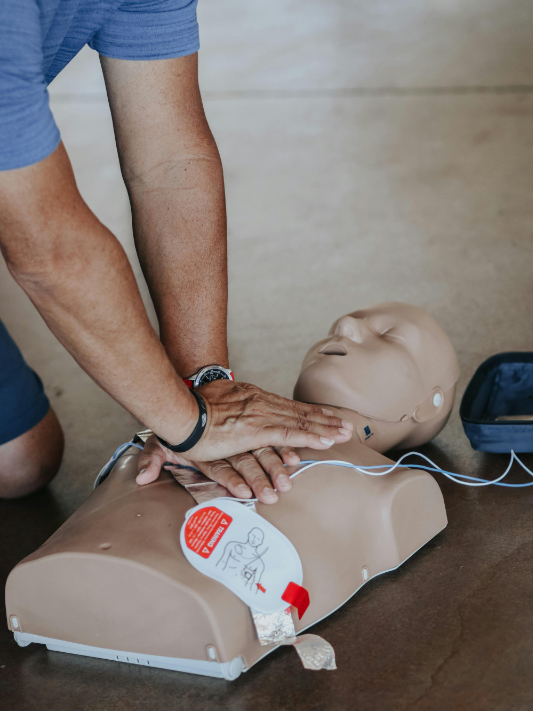Focus on the facts. For certain people, the risk of serious respiratory illness remains high. These include adults ages 65 and older, residents of long-term care facilities, pregnant people, people with certain health conditions and those living in rural areas.
Family Features - During the fall and winter months, respiratory infections such as flu, COVID-19 and RSV can surge. People who are vaccinated lower their risk of getting seriously ill and needing medical care if they get infected.
About 70% of adults in the United States said they probably or definitely will get a flu shot, and more than 50% said they probably or definitely will get an updated COVID-19 vaccine. While many people are ready to get this season's vaccines, others might still have questions.

Photos courtesy USDHHS
"It is normal for people to have questions about
vaccines," said Peter Marks, MD, PhD, director of the U.S. Food and Drug Administration's Center for Biologics Evaluation and Research, which oversees and reviews vaccine clinical trials. "It's important for everyone to know that all vaccines go through extensive testing before they are approved and that following approval, they are carefully monitored to identify any safety concerns so that they can be addressed quickly. Hundreds of thousands of volunteers have taken part in respiratory vaccine trials. The results tell us that these vaccines are safe and effective in preventing severe disease caused by flu, COVID-19 and RSV."
Here are some ways to talk about the importance of this season's vaccines with a family member or friend who is unsure about getting vaccinated.
Hear them out. When talking about vaccination, it's important to make others feel heard. There are many reasons why people may have questions and concerns about vaccines or even the health care system in general. Listen to their thinking and try not to judge. They want to know their thoughts and feelings matter.
Focus on the facts. Instead of calling out vaccine myths, focus on vaccine truths. Concentrating on myths can cause them to become the topic of your conversation. Instead, speak about the benefits of vaccines. For instance, you can mention vaccines cut your risk of being hospitalized for flu or COVID-19 by about half.
Ask if they need help getting vaccinated. Sometimes, people just need some help to find, schedule and get a vaccination. You can help them find a vaccine location at
Vaccines.gov. They may also need help finding child care or figuring out whether they can take time off from work. Offering a ride or accompanying them can also be helpful, especially if the closest vaccination site is far away. If English is not their primary language, offer to help them schedule the appointment and arrange for a medical translator if needed. When it's easier to get vaccinated, people are more likely to take this important step to help protect their health.
Having open, honest and supportive conversations about vaccines with family members and friends can make all the difference. For more information, visit
cdc.gov/RiskLessDoMore or talk to your doctor.
Flu, COVID-19 and RSV Vaccines Help People Risk Less Severe Illness and Do More of What They Enjoy
This season's vaccines are now available. Everyone 6 months and older should get an updated flu and COVID-19 vaccine. Everyone ages 75 and older, or 60 and older with certain health conditions such as such as heart disease, lung disease, obesity or diabetes, should get an RSV vaccine if they have not been vaccinated for RSV before.
For certain people, the risk of serious
respiratory illness remains high. These include adults ages 65 and older, residents of long-term care facilities, pregnant people, people with certain health conditions and those living in rural areas. People in some racial and ethnic groups, including people who are Black or Hispanic, are also at higher risk. People who are not up to date on flu, COVID-19 and RSV vaccines can reduce their risk by getting their 2024-25 vaccines as soon as they can.




























